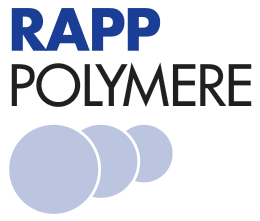€ 435,00*
1310000-25-20.500MG
Product information
PEG crosslinking agents for biotinylation. The biotinyl functionality is used to attach avidin or streptavidin containing substrates. Pegylation by binding of biotinyl PEG to avidin and streptavidin is very specific and fast. The amine functional group at one end of the PEG linker molecule allows for selective and covalent attachment to other molecules with complementary functional groups, such as carboxylic acids or activated esters, aldehydes and epoxides. The newly formed bonds are amides, imines or secondary amines. Applicable for reversible or permanent crosslinking with PEG.
Literature
L 99 α-Biotinyl-ω-Amino PEGs
- Niu, J.; Lunn, D. J.; Pusuluri, A.; Yoo, J. I.; O’Malley, M. A.; Mitragotri, S.; Soh, H. T.; Hawker, C. J. Engineering Live Cell Surfaces with Functional Polymers via Cytocompatible Controlled Radical Polymerization. Nat. Chem. 2017, 9 (6), 537-545. doi: 10.1038/nchem.2713
- Darko, A.; Wallace, S.; Dmitrenko, O.; Machovina, M. M.; Mehl, R. A.; Chin, J. W.; Fox, J. M. Conformationally Strained Trans-Cyclooctene with Improved Stability and Excellent Reactivity in Tetrazine Ligation. Chem. Sci. 2014, 5 (10), 3770-3776. doi: 10.1039/C4SC01348D
- Dalhaimer, P.; Engler, A. J.; Parthasarathy, R.; Discher, D. E. Targeted Worm Micelles. Biomacromolecules 2004, 5 (5), 1714-1719. doi: 10.1021/bm049884v
- Doh, J.; Irvine, D. J. Photogenerated Polyelectrolyte Bilayers from an Aqueous-Processible Photoresist for Multicomponent Protein Patterning. J. Am. Chem. Soc. 2004, 126 (30), 9170-9171. doi: 10.1021/ja048261m
- Chen, W.-H.; Luo, G.-F.; Lei, Q.; Jia, H.-Z.; Hong, S.; Wang, Q.-R.; Zhuo, R.-X.; Zhang, X.-Z. MMP-2 Responsive Polymeric Micelles for Cancer-Targeted Intracellular Drug Delivery. Chem. Commun. (Camb.) 2015, 51 (3), 465-468. doi: 10.1039/c4cc07563c
- Liu, Y.; Feng, L.; Liu, T.; Zhang, L.; Yao, Y.; Yu, D.; Wang, L.; Zhang, N. Multifunctional PH-Sensitive Polymeric Nanoparticles for Theranostics Evaluated Experimentally in Cancer. Nanoscale 2014, 6 (6), 3231-3242. doi: 10.1039/c3nr05647c
- Basu, S.; Harfouche, R.; Soni, S.; Chimote, G.; Mashelkar, R. A.; Sengupta, S. Nanoparticle-Mediated Targeting of MAPK Signaling Predisposes Tumor to Chemotherapy. Proc. Natl. Acad. Sci. U. S. A. 2009, 106 (19), 7957-7961. doi: 10.1073/pnas.0902857106
- Chung, H. J.; Lee, H.; Bae, K. H.; Lee, Y.; Park, J.; Cho, S.-W.; Hwang, J. Y.; Park, H.; Langer, R.; Anderson, D.; Park, T. G. Facile Synthetic Route for Surface-Functionalized Magnetic Nanoparticles: Cell Labeling and Magnetic Resonance Imaging Studies. ACS Nano 2011, 5 (6), 4329-4336. doi: 10.1021/nn201198f
- Kim, S. Y.; Cho, S. H.; Lee, Y. M.; Chu, L.-Y. Biotin-Conjugated Block Copolymeric Nanoparticles as Tumor-Targeted Drug Delivery Systems. Macromol. Res. 2007, 15 (7), 646-655. doi: 10.1007/bf03218945
- Han, B.; Stevens, J. F.; Maier, C. S. Design, Synthesis, and Application of a Hydrazide-Functionalized Isotope-Coded Affinity Tag for the Quantification of Oxylipid-Protein Conjugates. Anal. Chem. 2007, 79 (9), 3342-3354. doi: 10.1021/ac062262a

